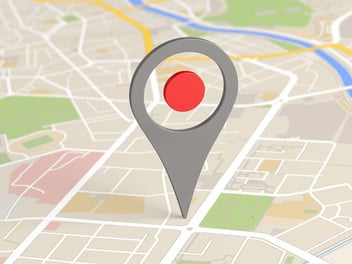In the land of Google, change is constant. Google is constantly testing their efficacy for each detail of the search engine, and that includes ad placement. In the last few years, making the search engine more mobile-friendly has been a primary goal since more users are accessing Google from mobile devices. The most recent change has been to the placement of ads on SERPs. On February 19, 2016 Google eliminated the right-hand column of text ads, and increased the number of text ads at the top of each page to four, and on the bottom to three. Depending on the exact query, you may see up to 11 ads on the page. Other results, such as Knowledge Panels will still appear in the right-hand column with potentially more ads.
You may have seen testing of this method in various configurations in your results before this date. Google tests various ad placements regionally, locally and in the results to specific queries all the time, making it hard to remember where ads were placed yesterday if you are not paying attention. The average consumer doesn't really see these changes on a day-to-day basis, because they are not concentrating on them.
Don't Panic!
Although change is scary and intimidating to many people, it isn't something to fear in this instance. Google has made these changes due to results from previous tests, and wouldn't have made the changes without a lot of research. While you may not have been aware of the imminent change, it is typical of Google to move ad placement around for better results. Google has been experimenting with four ads at the top of the page since 2010. More experiments were seen last year as tests for this new configuration was tested in other areas. Mobile devices offer new challenges for Google including how to present ads in the most efficient way.
Google will still not necessarily present four ads above the organic listings in all SERPs. They are focusing this effort on "highly commercial queries," meaning a clear intent to purchase. Examples given are "hotels in New York" or "car insurance."
Winners and Losers
It is difficult to tell exactly how the new configuration will affect advertisers, but Larry Kim has suggested the following:
- PPC marketers: Side and bottom ads account for 14.6 of total clicks, and changes in the way the ads are presented will offset most of the impact of this change.
- Position 3 and PLAs: Position 3 has gotten a big boost with click-through rates increasing 15 percent. Product Listing Ads have shown a moderate increase in CTR and paid clicks from SERP.
- Positions 5 through 11: These positions have all declined in impression share and total shares, definitely losers in this change.
- Organic search: As generally happens, organic search is a loser in this change, especially in highly commercial queries. In many queries, you won't see the fourth ad in the top section meaning that there is less of an impact to the top result in organic search. However, if you are in one of the more commercial industries (as judged by Google), you will feel the impact.
How to React
It is really too soon to know exactly how you will be affected. Study your metrics over the next few weeks and months to decide what steps to take. You may need to make adjustments with some ad placements depending on the keyword and/or industry you are in.





